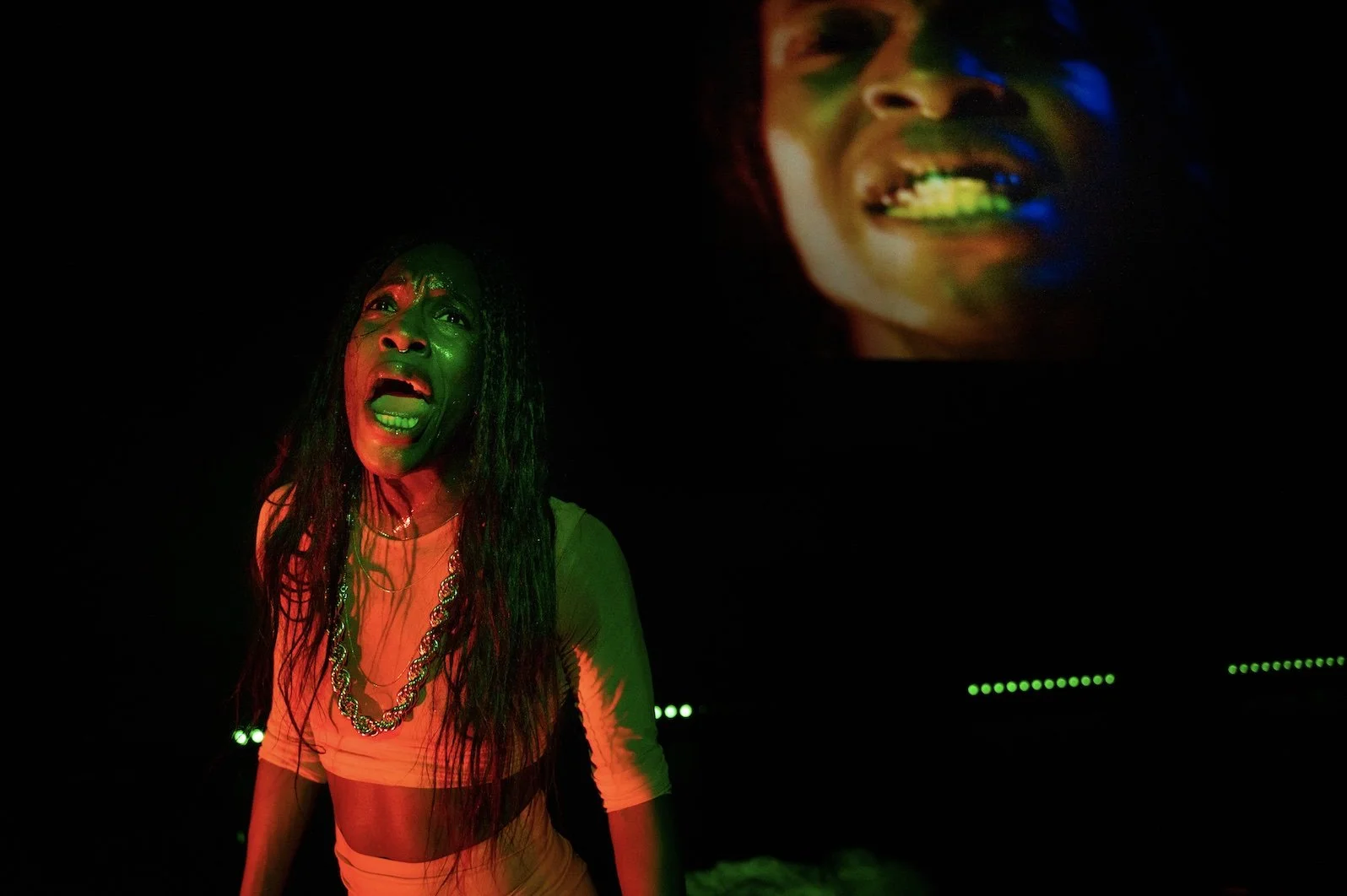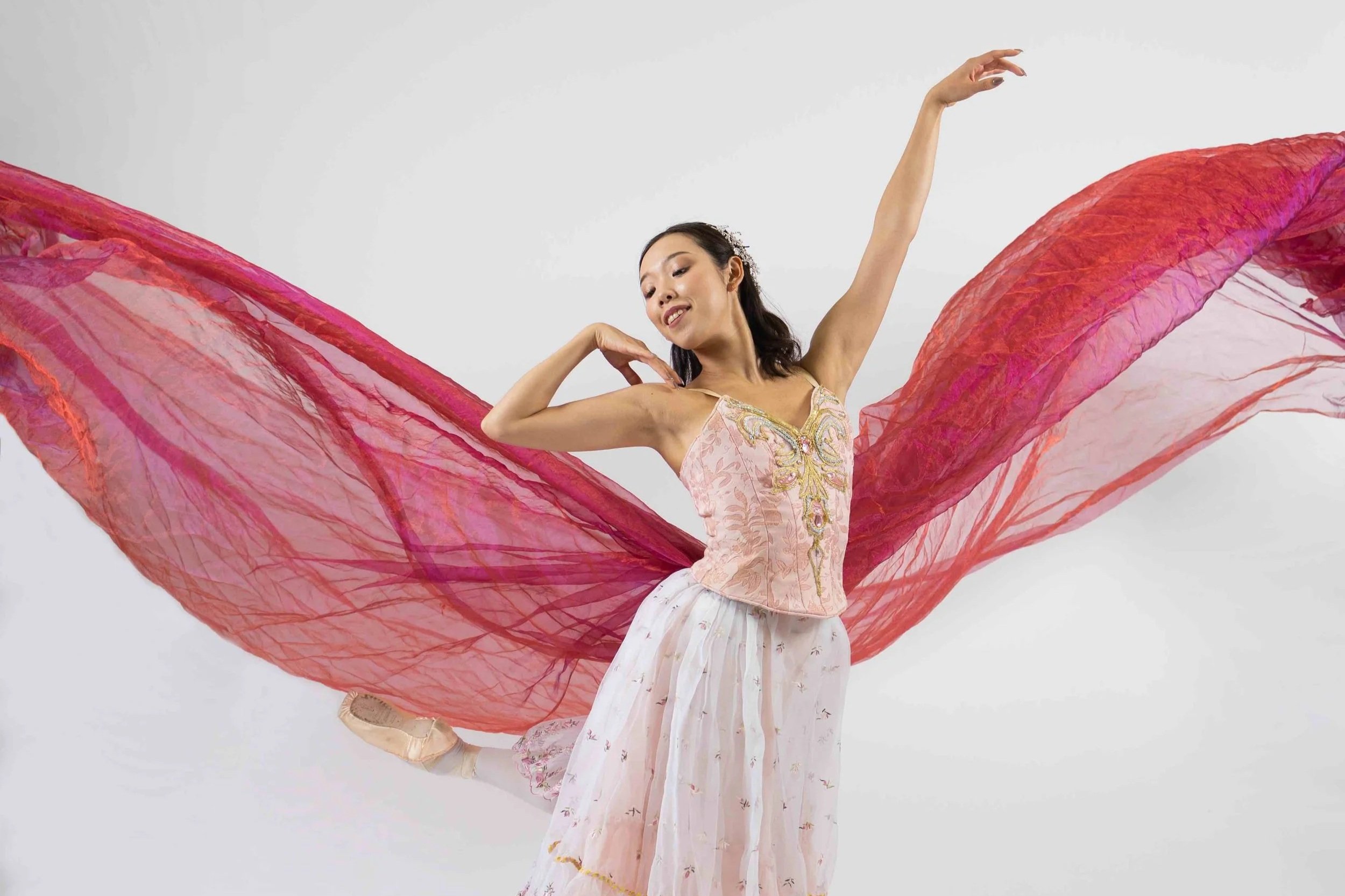Dance artists Deanna Peters and Less San Miguel find a new language in Orange
Converging from different realms of experimental and streetdance forms, the pair explore seeing and being seen
Photo by Reza Rezai
Mutable Subject and LessIZM livestream Orange in a plastic orchid factory presentation from Left of Main studio, on April 9 and 10
IN A NEW WORK called Orange, Deanna Peters and Less San Miguel have found a way to dance beyond categories, driven by club beats.
Vancouver-based Peters, the creative force behind the company Mutable Subject, trained at the Royal Winnipeg Ballet, but has since made her name in improvisation- and somatic-based experimental dance that goes far beyond stages. Constantly pushing boundaries between forms, she’s organized Sask Socials dance parties with drinks and DJs at galleries; created presentations and posters as part of the Body Talk project; and even started a basketball league for dancers that she documented through video. Meanwhile, San Miguel—better known as LessIZM—is a Winnipeg streetdance artist whose work spans B-boying, hip-hop, and dancehall, as well as Latin forms like Bachata and salsa.
But for Orange, they left a lot of that at the door and started fresh.
“I prefer the term ‘art dance’,” says Peters over a Zoom call with the Winnipeg performer. “And if you’re creating art dance and there’s no form, there's also no language. So we had to create a whole language together so that we can understand what we’re talking about.”
For his part, San Miguel, who’s been working on the project with Peters since 2019, welcomed the freedom the experiment allowed.
“It differed from everything I was used to,” he says. “My approach to it was keeping an open mind about every idea...so when we were creating I felt like everything was possible or valid—whereas in previous contexts, it wouldn’t necessarily be valid; there’d still be a form or a genre you kinda have to abide by.”
Presented by plastic orchid factory at its Left of Main studio, the resulting Orange will be broadcast live via Zoom, with the performers operating two laptop cameras. Audience members can watch two views in the Zoom room, either side-by-side or separately.
Breaking away from another tradition, the pair’s starting point was to dispense with performing “frontally” to an audience. “I wanted to see what happens if we triangulate that and we just focus on each other,” explains Peters. “How does that invite the gaze of the audience?
Photo by Reza Rezai
“Spacially, it's kind of like a boxing ring: we have our corners and have our stuff there, if we need to go back and have our water or something. So it’s often this going to our sides and then coming back and facing each other.”
With that starting point, the pair delved into its improvisational creative process over several sessions in the past two years.
The result is a piece that upends notions of how bodies can partner—connecting in a way the now “bubbled” pair admits has extra resonance in this socially distanced era where we’re all supposed to stay meters apart.
“There’s an intimacy that’s created through the way we are working together, the way we’re democratizing our bodies,” explains Peters. “I crawl up through Less’s legs, his eye is on my knee: we’re putting ourselves in these unusual relationships, trying to sidestep the heterosexualized duet and blow that right open.”
But far from a stripped-down exploration of partnering, Orange brings in several dynamic lighting, design, and sound elements to the piece.
For one thing, there’s another body onstage: DJ Adam 2 will live-mix music, building a club atmosphere that feels like home for both Peters and San Miguel.
“If there’s anything I’m feeling a lack of—and that's in my dance or in my life—it's in that space of dancing in a club,” Peters says. “Adam DJ’d a lot of parties I used to host pre-COVID, and what’s been really lighting my fire this week...is the three of us get to have our club. The whole opening is just Less and I moving , this stream of consciousness preparing our space, preparing our bodies, preparing our connection with each other….When people come to the show, it’s going to be like a virtual club. If they want to dance or just listen to the music, they can select how they engage with it and how they listen.”
“My approach to club dance in particular has to do with being in an environment where you’re there to have fun; you’re there to dance and listen to good music,” San Miguel adds. “The focus isn't people watching you; it's this environment where you really are free. So in the world of house dance or waacking or vogueing or any of these specific styles of club dance it is that type of mindset of taking the judgment away. It’s like creating with Deanna: my approach is having that open-minded approach to it.”
Dramatic lighting designed with James Proudfoot throws the duo’s shadows against the wall.
“It enlivens the space with more bodies,” says Peters. “It’s trippy!”
And the costumes, artfully embellished with appliques and other techniques, have come to Orange by overcoming a few pandemic-era cross-border issues: Brooklyn-based visual and textile artist David B. Smith is altering clothes sent back and forth via snail mail.
As for the title itself, where does “orange” come into play? The pair laugh and say the fruit does take a role in a task in the work, but the word itself became part of the new language they invented working together.
“It became, ‘Let’s call it that for now,’ and then everyone was asking so much about it, it became funny,’” says Peters. “It’s an invitation for people to put their own meaning or experience on it.”















